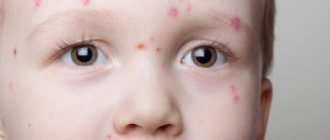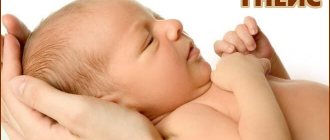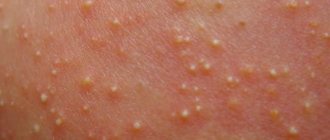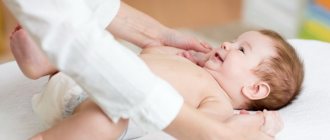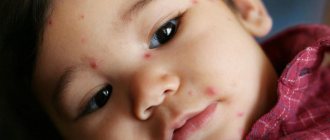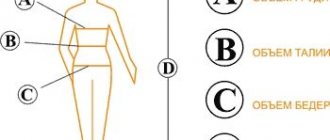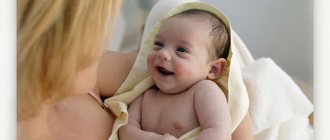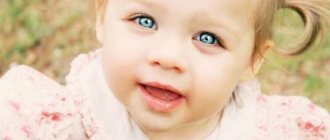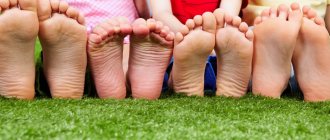When any rash occurs on the surface of the skin, there is a malfunction in a certain part of the body. Often such inflammations are painful, including when it comes to acne on the head. If a person has short hair, then it is impossible not to notice such rashes. But people who have long hair should not take them lightly. Before starting treatment, it is necessary to understand the causes of this problem.
Reasons for formation
The hydrolipid film on the scalp performs a protective function. If bacteria manage to overcome it, they move into deeper areas and provoke inflammation. It manifests itself as acne. Combing your hair may cause itching to intensify, even if it is just a small rash. The reasons for this phenomenon can be varied. They are associated with both external and internal factors. Experts divide them into several groups to make it easier to understand their features. So, in adults, internal causes include:
- Hormonal disbalance. It is more common in women, especially with menstrual irregularities.
- Polycystic ovary syndrome. It is also a problem that is relevant for the fair sex. When the organ works intensively, the fat content of the epidermis increases.
- Acne appears in men when the level of the sex hormone testosterone changes.
- Regular stress also leads to problems related to the adrenal glands. Subsequently, a malfunction that occurs in certain systems of the body provokes skin rashes.
- Some medications may cause similar reactions.
- As a result of hypothermia after suffering from colds, boils and purulent pimples sometimes appear.
A fairly simple external reason for the appearance of acne on the scalp can be the use of inappropriate shampoo. Water that contains a large amount of chlorine contributes to dry skin and the formation of pustular rashes. The use of pillows made of synthetic materials for night sleep is also considered unfavorable. The scalp on them does not breathe normally, it often sweats, which is why inflammation forms on it. Washing your hair, both infrequently and too frequently, leads to similar consequences.
Reasons for the appearance of pustules on a child’s head, methods of treating them
Any change in the child’s well-being or the appearance of various rashes on his skin does not go unnoticed by attentive parents. In infants and children in the first months of life, you can sometimes notice pustules on the head, that is, small pimples containing a purulent secretion inside. There may be only a few such pimples, or it may happen that they cover the baby’s entire head. In order to prevent the addition of various complications and quickly cope with the problem, it is necessary first of all to try to establish the main cause of the rash and only then, starting from it, take measures to treat the pustular rash.
Features of the skin of children
The skin of any child, and especially babies in the first years of life, is very thin and therefore sensitive to various adverse effects. As a result of this, rashes of various types occur several times more often in children compared to adults. Small pimples on the head of babies are of physiological origin, that is, they appear under the influence of the beginning production of hormones and in this case disappear within a few days without a trace and do not require special treatment. But if these pimples contain pus, then it is necessary to choose the right treatment tactics. If no measures are taken to eliminate the pustules, the inflammatory process may spread deeper and then a long course of therapy will be required.
Causes of pustules on the head
Doctors associate the occurrence of pustules in a child with the sebaceous and sweat glands, which are most abundant on the head. The main function of these glands is to secrete the secretion necessary to create an optimal protective film. But sometimes sebum accumulates in large quantities, sweat, particles of dust and dirt are mixed in with it, and this whole mass clogs the pores. This process significantly impairs cellular respiration and creates optimal conditions for the proliferation of various microbes, which lead to the appearance of purulent pimples. Several reasons predispose to increased formation of sebaceous secretions, in children these are:
- Lack of hygiene. Moreover, pustules develop not only in those children whose parents rarely bathe, but also in cases of excessive cleanliness. In the latter case, the constant use of aggressive soap solutions washes off the protective film from the skin.
- Reduced immune function. Pustules often appear after suffering from colds, infections, or in premature babies.
- Mother's illnesses. If a woman suffered from tonsillitis, caries, or pancreatitis during pregnancy, then the child’s body will work with some disruption in the first months. In particular, such babies often have problems with the gastrointestinal tract and dysbiosis, and this does not have the best effect on the condition of the skin.
- Allergy. A pustular rash can be caused by intolerance to certain foods, allergies to synthetic materials, detergents and powders.
- In infants, pustules often appear after they are switched to a new type of diet. This is due to the development of the functioning of the gastrointestinal tract.
- A pustular rash on the scalp can also be triggered by temperature changes.
- The cause of the appearance of pustules can also be Staphylococcus aureus.
In children of preschool and school age, the appearance of pimples with purulent contents on the head can be caused by various stresses and experiences. Squeezing pimples is also of great importance, as germs spread quickly.
Methods of treatment and prevention of pustular rash
The formation of pustules in young children should not be ignored. If there are only a few of them, they do not spread, the child feels well, and there are no signs of inflammation, then you can cope with them yourself. But if the pustular rash is profuse, there is hyperemia at its edges, and even more so if there is a fever, then you should immediately consult a dermatologist. Usually, after an examination, the doctor diagnoses pyoderma and prescribes appropriate treatment.
You can cope with the appearance of pustules on your own by following several recommendations:
- Increased attention must be paid to hygiene. The child should be bathed daily, adding a decoction of chamomile, oak bark or calendula to the water. It is advisable to use only baby soap without various additives.
- After bathing, the pustules are treated with hydrogen peroxide, a solution of brilliant green or methylene blue. You can also use alcohol tincture of calendula, diluted in half with water.
- During the treatment period, it is necessary to change pillowcases daily and wear only clean and ironed hats. You need to give up synthetic clothing.
- Young children must have their nails cut short so they are less likely to scratch their scalp.
- Be sure to treat all toys with boiling water and rinse personal hygiene items.
- The room needs to be maintained at an optimal temperature, that is, there is no need to overheat the child.
- If pustules appear after the introduction of a new type of food, then it is temporarily removed from the diet.
When to see a doctor
Drug treatment of pustular rash is selected only by a doctor. If pimples appear not only on the head, but throughout the body and their spread cannot be stopped without medication, then you need to consult a doctor. In some cases, a course of antibiotic therapy is required to eliminate purulent rashes. Do not forget that an advanced purulent process leads to abscesses, the development of boils and even sepsis. You should not postpone visiting a doctor if pustules on the scalp are accompanied by other symptoms of deterioration in health, these are:
- Rise in body temperature.
- Inflammation and swelling around the abscess.
- Decreased appetite, weight loss.
- Signs of intoxication.
- Dyspeptic disorders.
To accurately determine the cause of such changes, the doctor will prescribe a comprehensive examination, on the basis of which treatment will be carried out. And the sooner you start therapy, the faster the positive result will be, and the less the child’s body will experience the toxic effects of the prescribed medications.
pervenets.com
In children and adolescents
The appearance of a rash on the scalp is a pressing problem for young children. As for newborns, such phenomena are possible due to improper nutrition of the nursing mother. Children of primary school and preschool age react in a similar way to unsuitable food products. The same is true when using toys made from low-quality materials. Parents should be more attentive to changes in the skin of the child, especially if we are talking about an infant.
In teenagers, acne is the main problem that can be seen with the naked eye. Rashes on the temples, back of the head and other areas of the head are the result of a hormonal surge. This phenomenon is accompanied by increased sensitivity and itching. The areas near the hair follicles become clogged with the secretion of the sebaceous glands. As a result, inflammation forms. This, in turn, creates the preconditions for the formation of purulent or red pimples.
What are they?
Acne on the scalp develops in much the same way as on the face. And they can manifest themselves in the following ways:
- Comedones. They are the result of clogged pores with secretions from the sebaceous glands or dirt. They may not cause any discomfort for a long time and be invisible under the hair. There are also subcutaneous comedones that can only be felt.
- Inflamed acne. They can develop from comedones when infected. There are colds when a person is hypothermic, or other factors may occur. These appear to be red pimples with white heads. They can hurt and itch, and cause discomfort when scratching. May also be noticeable.
- Purulent pimples (ulcers). If inflammation is not treated early, it will develop further. The pimple may increase in size, become very painful, and there may be a risk of infection in nearby tissues. A pimple with a white head becomes an abscess. This can occur if there is no proper treatment, if immunity is very low, or there are serious metabolic disorders.
- Viral acne. They are the result of infection of the body.
- Zhiroviki. They mean a large accumulation of sebum. They form in the same way as comedones, but much deeper. Wen are large and noticeable, but may not cause any discomfort at all.
Acne classification
A dermatologist will help you figure out why acne appears on your head. Painful pimples can pop up on the face and other visible parts of the body, thereby causing discomfort. They can only be cured by eliminating the underlying cause. They often appear in people with chronic gastrointestinal diseases.
Anyone can experience rashes. All pimples differ from each other in appearance. Depending on the category of rashes, they may be characterized by certain properties. Having noticed them on your head, you need to take all possible measures to prevent their further spread.
White, red and black
The white elements resemble small grains localized under the epidermis. They have the appearance of a tubercle. People call them “prosyanka”. When the sebaceous glands become clogged with keratinized skin particles, closed comedones are formed. A plug is created, under which microbes actively multiply, forming a white nodule. Teenagers often have to deal with this phenomenon. But adults also often encounter the described seals. Sometimes they can be itchy.
Red pimples are rarely a cause for concern. In this case, inflammation spreads in waves, either subsiding or intensifying. When this condition worsens, a white bump with pus forms in the central part of the pimple.
Blackheads or open comedones have a black tip. Due to the reasons for their appearance, they have a certain similarity with white pimples. However, they are localized in the surface region. The hair follicle or pores, which are clogged with remnants of the epithelium and secreted fat, are filled with a whitish substance. Under the influence of oxygen, an oxidation process occurs, due to which the element takes on the appearance of a black dot. They do not cause any concern until they become infected. If this does not happen, they only spoil the appearance of their owner.
Purulent rashes and subcutaneous nodes
A rash that contains pus not only spoils the aesthetics, but is also painful. Deep pimples may contain a cyst at the base. It is quite compacted and surrounded by bluish-tinged skin. The red pustule contains pus in its structure. The causes of purulent acne are:
- taking steroids;
- hormonal problems;
- an infection that has entered the pores.
Only a qualified specialist can determine the exact cause of the problem. Between the epidermis and hypodermis is the dermis. It is a piece of connective tissue. It contains sweat glands that form painful nodules when blocked. When microbes move into connective tissue, inflammation increases. If acne becomes large, this indicates damage to the subcutaneous follicle. Accordingly, this indicates that its contents have entered the dermis area. When the scalp on the top of your head hurts, it makes sense to check whether acne has begun to form there.
Symptoms and signs
The main symptom characterizing allergic diseases is itching. At the very beginning of an allergy, there is almost no itching on the head, but as symptoms increase, allergic manifestations become more severe.
Along with itching the following is noted:
- peeling of the skin with the formation of white scales on the surface of the head, resembling dandruff in appearance;
- In addition, skin hyperemia at the site of scratching, thinning and hair loss may appear.
Often, such manifestations of allergies can be triggered by a fungal infection. In this case, the rash may affect the area of the ears and eyebrows.
There is a type of allergy that is characterized by a practically asymptomatic course. The only manifestation of this atypical disease is severe itching in the scalp. Unable to restrain themselves, patients scratch the area of the rash until there are bleeding ulcers, risking introducing painful microflora into the infected wound.
Skin lesions on the head are present in 50% of patients with neurodermatitis. The main category of patients are children. In infants, allergic symptoms manifest themselves differently. In one case, brown scales appear on the baby’s skin, which are commonly called seborrhea. In the second case, red spots and small blisters appear, which subsequently burst and dry out, forming a thin scab on the head.
As a rule, atopic dermatitis occurs with accompanying symptoms. In a child under 3 years of age, the rash may spread to the cheeks. In older children, the rash usually spreads to the neck, face and limbs.
In adult patients, a combination of lesions of the scalp with the face, forearm and décolleté is observed. In the case when itching appears suddenly and does not stop for a long time, this is classified as a manifestation of complications.
If acne appears on the head, this phenomenon is accompanied by itching. After 1-2 days, red or pink formations appear on the skin. They rise slightly above the surface. The diameter ranges from 1 mm to 1 cm. Pain is felt when touched. Irritation appears and the skin feels tight.
Gradually, the pimple matures, and purulent contents accumulate on the surface formed near its surface. After a few more days, the protective film covering the formation bursts and the liquid flows out. Some formations mature without the formation of pus. Hair acne can be localized, often located between hair follicles. But there may be diffuse rashes, forming columns of inflamed areas.
Pimples on the head are localized:
- in the back of the head,
- in the partings between the hair,
- in the border area between the neck and hair,
- on the temples,
- upper frontal part.
If a purulent pimple occurs in the deep layers of the dermis, it may leave scars or hair loss.
Choosing a specialist
If rashes appear on the scalp regularly, you should consult a doctor. A professional dermatologist deals with this problem. He prescribes laboratory tests and additional studies to determine the cause. Based on the diagnostic results, the doctor prescribes treatment or refers to related specialists:
- endocrinologist;
- allergist;
- neurologist;
- therapist.
By getting rid of the main cause, it will be possible to achieve a successful cure.
How to deal with them?
Acne should be treated only under the supervision of a specialist. The fact is that they can only be manifestations of some more serious problems. Therefore, sometimes an examination of the body is necessary to determine the cause of acne.
The main methods of combating acne on the head are as follows:
- Antibacterial drugs. In pharmacies you will find a wide range of such products. Before using them, you will need to wash your hair well and dry your hair. Then the ointments are applied in small portions to problem areas.
- Ichthyol ointment. It is considered one of the best in the fight against purulent inflammation. Apply the product very carefully only to the affected areas.
- Salicylic alcohol. Rub it on the skin around each pimple. Do this carefully to prevent burns. You can also use camphor alcohol.
- Tar soap. A very good antiseptic. Use to wash your hair. The pharmacy also sells special tar shampoos that have a healing effect and help fight acne. You can read more about it in this article.
- Antibiotics. Prescribed only in severe cases. To treat acne under the hair, erythromycin, tetracycline, and asoxicillin can be prescribed. After taking antibiotics, means may be indicated to restore normal microflora in the intestines.
- Ultraviolet treatment procedure. It must be performed by a professional cosmetologist. Ultraviolet light acts on problem areas, helps dry out acne and relieve inflammation.
In addition, to combat acne on the head, you can use proven folk remedies:
- Apple vinegar. You can prepare a very useful mouthwash based on it. Mix 100 grams of vinegar and plain water. Use the resulting liquid to rinse your hair after washing. After five minutes, rinse your hair with plain water to completely remove the vinegar.
- Tea tree oil is a good antiseptic. It should not be used in its pure form. It is better to add a few drops of the product to a hair mask or shampoo.
- You can prepare a very healthy mask with honey and cinnamon. Mix two tablespoons of honey and a teaspoon of cinnamon powder. Apply the composition to the affected areas, leave for 20 minutes, then rinse. For noticeable results, use the mask twice a week until the problem disappears completely.
- Strawberry juice. Cleanses the scalp well. Wipe it with freshly squeezed juice from ripe red berries.
- Tincture of calendula. You can prepare it yourself or buy it at the pharmacy. Mix two tablespoons of tincture in a glass of clean water. Wipe problem areas with the resulting product. Calendula relieves inflammation well, and the alcohol in the tincture helps dry out pimples.
- You can use an infusion of yarrow. To prepare it, you need to combine a liter of boiling water and five tablespoons of dry plant material. Let the mixture sit for at least three hours. Rinse your hair with the product after washing.
- Aloe juice is well known for its anti-inflammatory properties. To prepare the mask, apply a little freshly squeezed juice to the skin, cover your head with film and a towel. It is recommended to keep the composition for about 20 minutes.
- You can use anise seeds to combat acne on your head. Fill them with warm water and leave overnight. The seeds must swell, then they must be crushed. Apply the resulting paste to the affected areas of the skin. You need to keep it for at least an hour. To get good results, repeat the procedure every two days.
- You can prepare a shampoo with a high therapeutic effect based on colorless henna. Pour two tablespoons of its powder with warm water and let the mixture brew for at least an hour. Then add a raw chicken egg and stir everything well. Apply to hair with smooth massage movements, then wash your hair well.
- Dandelion decoction can be applied to the affected areas. Prepare it in the proportion of one spoon per glass of boiling water.
Methods of disposal
Only a doctor knows how to treat acne that appears on the scalp. Self-therapy may cause the condition to worsen. By combining physiotherapeutic techniques and medications, it is possible to achieve the best results. When a long course of treatment is prescribed, do not be upset, since in such cases it is possible to provide a more lasting effect. However, you have to take care of problem skin correctly and switch to healthy foods.
To make the right decision on how to get rid of acne on your head, you should study modern medications to combat the problem. Medicines traditionally act as a component of therapy. They can be divided into several groups. The main ones are:
- Antiseptics. They have the maximum gentle effect, disinfect the surface of the skin, and prevent the formation of a new rash. This effect is achieved thanks to zinc, which is included in the preparations. It is necessary to treat acne, as well as the area of skin that is located a short distance from it. Common medications include Metrogyl, Ichthyol ointment, Skinoren.
- Adsorbents. The action of these drugs is aimed at removing waste and toxins from the skin. They also help normalize metabolism in tissues and regulate the functioning of the sebaceous glands. Doctors usually prescribe brewer's yeast, the drugs Lactofiltrum and Polysorb.
- Antibiotics. They are prescribed when any complications arise. Depending on the severity of the disease, antibacterial agents are used in the form of ointments for external use or in the form of tablets. Levomekol, Tetracycline, Zinerit ointments or Erythromycin, Clindamycin tablets are usually prescribed.
Rash on baby's head
1/red-rash-on-the-head-and-face-of-babies.jpg” alt=”red rash-on-the-head-and-face-of-babies” width=”150″ height=”200″ /> During the very first month of life
Babies may develop red rashes on their faces, which doctors call neonatal acne (or neonatal cephalic pustulosis). So, this small red rash on the head and face of a newborn baby is nothing more than a small pustular rash.
Every fifth child, as they say, “blooms” in the first days of life. In this condition, a small, inflamed, red rash appears on the scalp and
on the face of a newborn baby, and in the center some pimples have a white dot. The skin gradually becomes oilier, there are more rashes, they spread to the cheeks, chin, eyelids, forehead, scalp, and somewhat less often to the chest, to its upper part. The picture, of course, is unpleasant and very frightening for parents. Quite often, such a small red rash on the head and face of a newborn baby is perceived as an allergy, which, at best, only affects the nursing mother - she puts herself on a strict diet. In fact, the appearance of such a “bloom” is associated with the excessive proliferation of Malassezia yeast fungi of the genus. The proliferation of these yeasts is preceded by activation of the sebaceous glands by the mother's androgen hormones or the hormonal background of the baby itself. It is this hormonal push that leads to increased production of sebum, clogging of pores and hair follicles - and as a result, a favorable environment is formed for the growth and reproduction of entire colonies of fungi.
Treatment, as a rule, is not required for neonatal cephalic pustulosis, or “bloom,” and the rash disappears without a trace within one to three months.
There are general recommendations to prevent such a small red rash from appearing on the head and face of a newborn baby:
- Wash your child daily with boiled water;
- Make sure that the physical parameters of the air are optimal: the air temperature in the room is 20 - 23 ° C, and the humidity is 40 - 70%.
- For severe rashes, use antifungal cream for 5 days;
- Let the nursing mother stick to the usual menu (her hypoallergenic diet will not reduce the number of rashes on the face of a newborn baby);
- It is not advisable to use:
- Alcohol solutions (calendula tincture, brilliant green, etc.)
- Antihistamines (ointments, drops or tablets);
- Hormonal ointments;
- Potassium permanganate solution;
- Fatty ointments and oils;
- Antibiotics;
- Powders;
- Adsorbents (activated carbon, Smecta, etc.);
- Lactic acid bacteria and so on.
The cause of a red rash on the face or body of a newborn baby may also be heat rash. Overly caring mothers and even more so all-knowing grandmothers wrap their beloved child in a hundred clothes, despite good heating in the apartment or warm summer weather outside. The child sweats, cries, worries, but the elders know better how he will feel better, and with enviable consistency they dress him at the slightest breath of wind, they are afraid to ventilate the room, lest the baby catch a cold. Stop it! Dear adults, turn on your head and listen to your feelings. If you are warm, then your baby will be warm. Dress it according to yourself. And no prickly heat will bother him.
The infection can also cause a red rash on the face and body of a newborn baby. We wrote about this, but let us remind you that in this case, self-medication is not an option. If there is a fever, the child is lethargic and restless, call your doctor and have him visit you.
Add from social media network bookmarks:
Advertising:
One comment on the topic “Small red rash on the head and face of a newborn baby. Treatment."
Rash on the head of a baby photo
Read other articles about children, their life, upbringing, and development.
If you liked the article - Rash on the head of a baby, then you can leave a review or talk about it on social networks.
And also see other articles written especially for you:
- Knitting for babies
- Can a one-year-old child have cocoa?
- Is it possible for children to
- Is it possible to give Linex to newborns?
- Baby spits up curds
Smile with your child!
